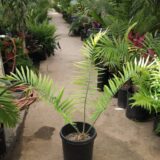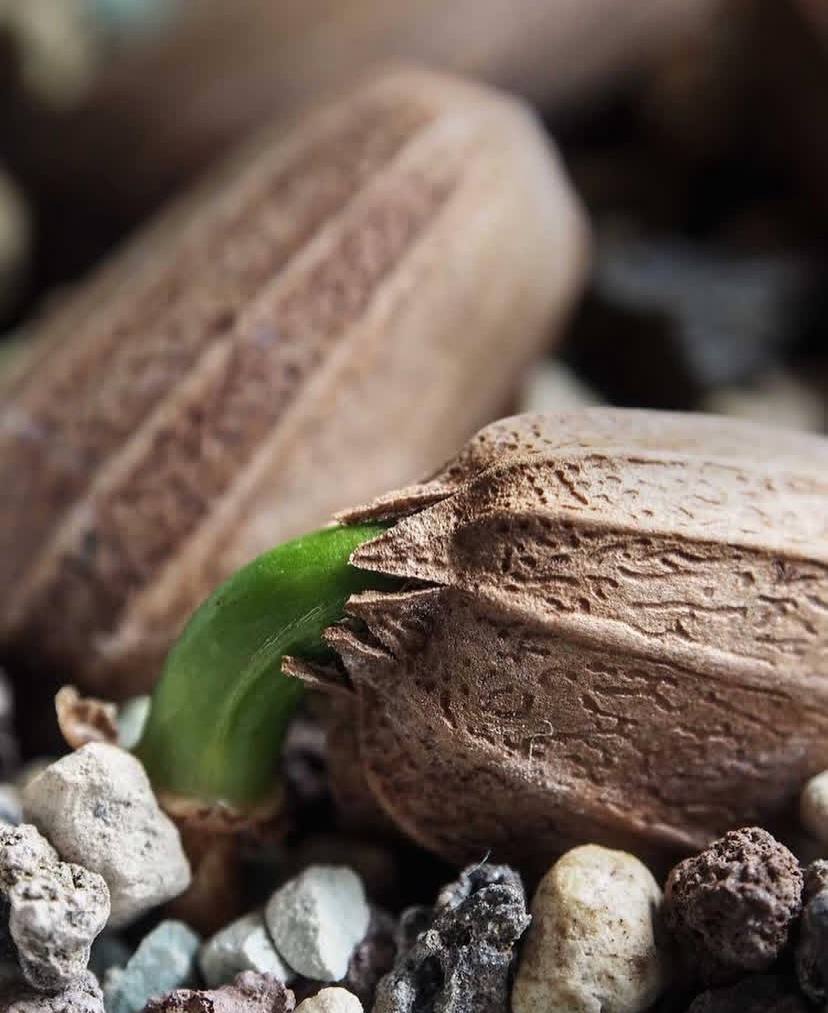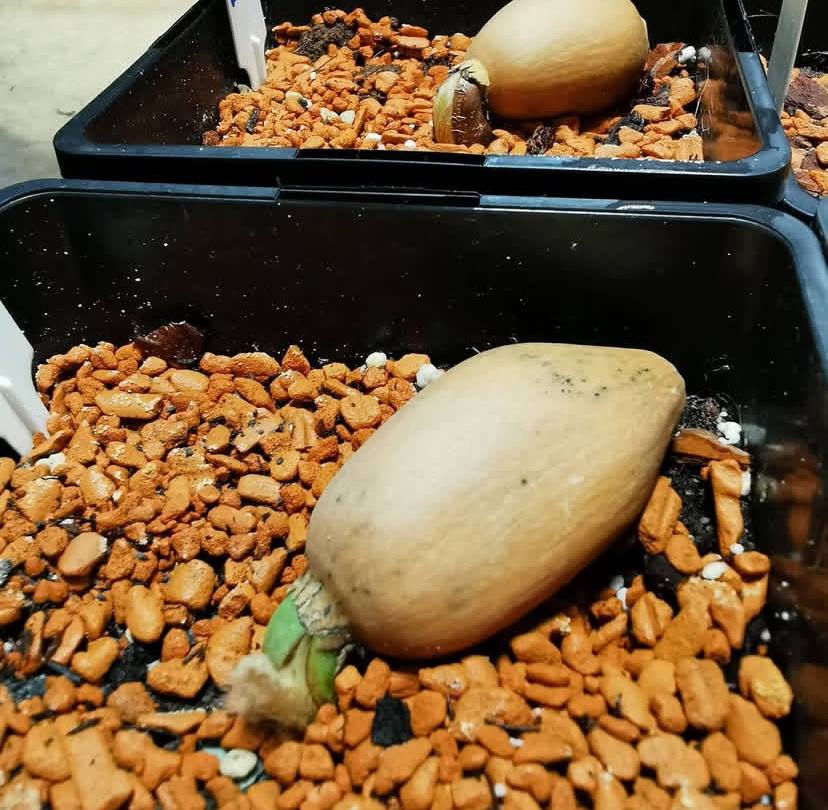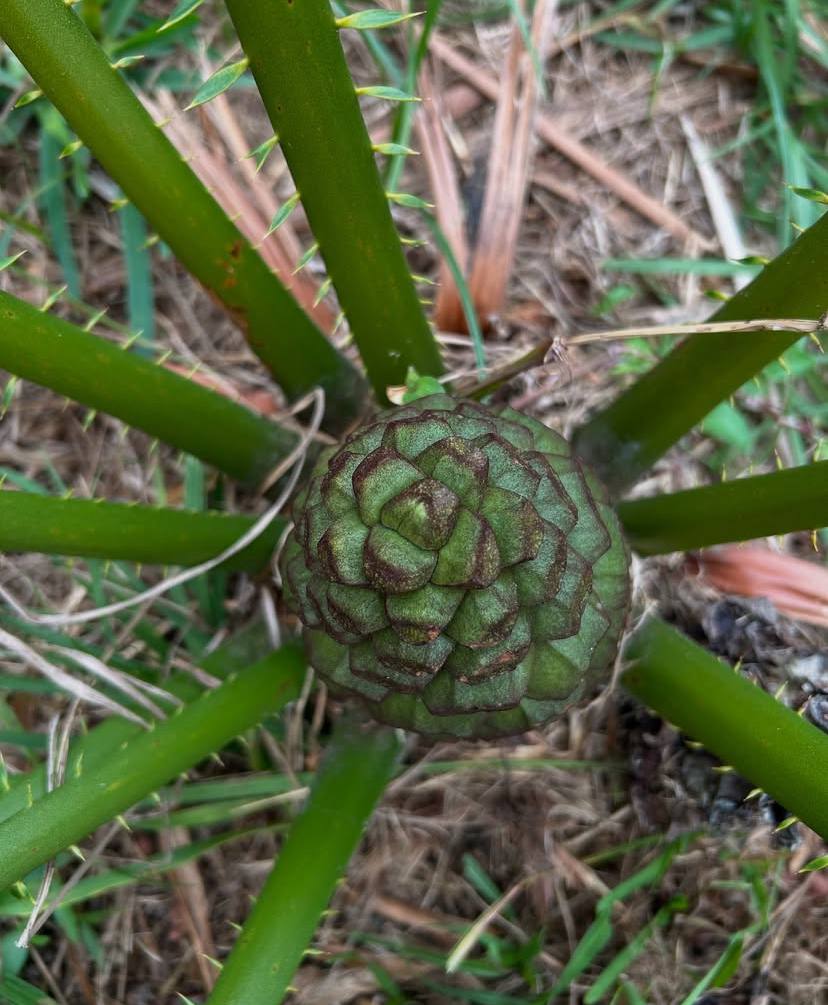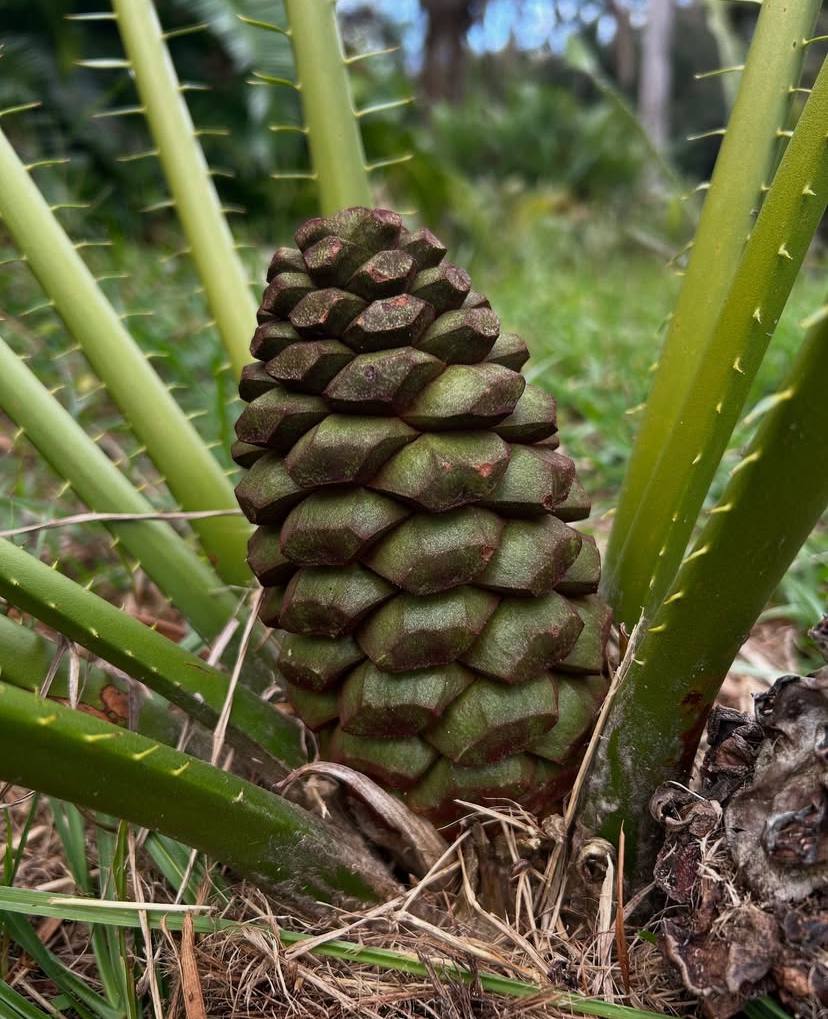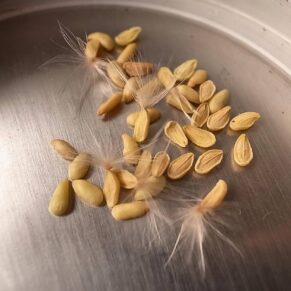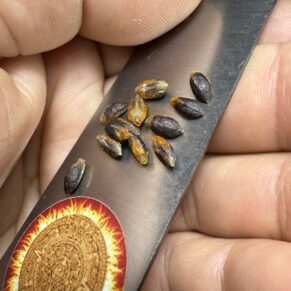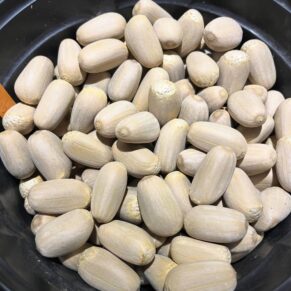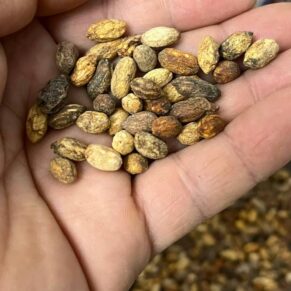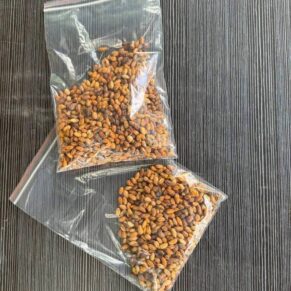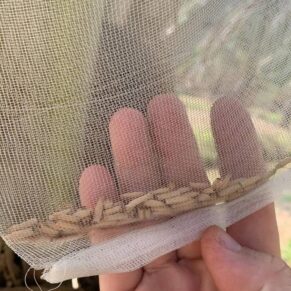- Your cart is empty
- Continue shopping
Shop
$54.00 – $499.90Price range: $54.00 through $499.90
Buy and grow Encephalartos barteri seeds—rare, endangered West African cycads perfect for collectors and conservationists. Learn germination, care tips, and legal sourcing.
Encephalartos barteri Seeds: A Comprehensive Guide to Cultivation, Conservation, and Care
Introduction
Encephalartos barteri, commonly known as the West African Cycad, is a rare and endangered species native to Nigeria, Benin, Ghana, and Togo. This dioecious plant is renowned for its distinctive appearance and ecological significance. However, due to habitat loss and overcollection, it faces the threat of extinction in the wild. Conservation efforts are underway to protect and restore its natural habitats through community-based approaches and sustainable practices.Facebook group

Botanical Description
-
Family: Zamiaceae
-
Genus: Encephalartos
-
Species: E. barteri
-
Authority: Carruth.
Morphological Features
-
Trunk: Short and conical, typically reaching up to 2.6 meters in height.
-
Leaves: Bright green, ranging from 1 to 2 meters in length, with narrow, lanceolate leaflets.
-
Cones: Dioecious species with separate male and female cones. Male cones are spindle-shaped and yellow, while female cones are ovoid and green.
-
Seeds: Oblong, measuring 20–30 mm in length and 18–23 mm in width, covered by a red sarcotesta caudexplants shop
Habitat and Distribution
Encephalartos barteri is endemic to the tropical forests and woodlands of West Africa. It thrives on rocky hillsides and valleys, particularly on sandy soils over granites and sandstones. The species is found at altitudes ranging from 400 to 1400 meters above sea level in the following regions:
-
Nigeria: Jebba and Ilorin areas.
-
Ghana: Southern districts of Lake Volta.
-
Benin: Borgou Department and near Savalou.
-
Togo: Various locations within the country.
Conservation Status
Encephalartos barteri seeds is classified as “Vulnerable” (VU) on the IUCN Red List due to its limited distribution and declining population. The species is also listed in CITES Appendix I, indicating it is threatened with extinction and prohibited from international trade unless under exceptional circumstances. The continuous collection of seeds and seedlings from the wild is unsustainable and depleting the populations of E. barteri in Benin. Without conservation action, Encephalartos barteri seeds will face extinction in the wild.
Seed Collection and Storage
The seeds of Encephalartos barteri seeds are typically collected from mature female cones. After pollination, female cones produce seeds that can be harvested and sown to propagate new plants. Due to its dioecious nature, both male and female plants are required for fertilization. Pollination is primarily wind-driven, with insects also playing a role. Once fertilized, female cones produce seeds that can be harvested and sown to propagate new plants. After the cone falls apart, the embryo continues to grow. In most cases, the seeds are ready to sprout 12 months after pollination. Encephalartos seeds should be thoroughly cleaned and stored in a cool place. Some people prefer adding fungicide to prevent fungal growth. When ready to plant, clean all seeds thoroughly. If a seed has even a little bit of the seed coat still on it, fungus can attack and kill the seed. Before planting the seeds, soak them in water for about two days. For optimum results, the medium should be as sterile as possible. There are countless ways people try to germinate cycad seed. Some people plant the seed on top of the medium. Others plant half of the seed into the medium. In this manner, the seed is absorbing moisture. If the sprouting end of the seed is left uncovered, fungus cannot enter easily. caudexplants shop
Germination Process
-
Seed Preparation: Soak the cleaned seeds in water for 24–48 hours to soften the seed coat.
-
Planting Medium: Use a well-draining, sterile medium such as washed sand or a cactus mix.caudexplants shop
-
Planting Depth: Place the seeds on their sides, half-buried in the medium, ensuring the sprouting end is slightly exposed.
-
Temperature and Humidity: Maintain a temperature of around 28°C and high humidity to encourage germination.
-
Watering: Keep the medium moist but not waterlogged.
-
Light: Provide indirect light; direct sunlight can scorch the delicate seedlings.
Germination can take several months, and patience is essential.
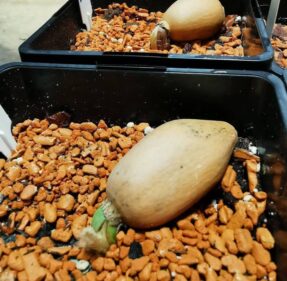
In Vitro Tissue Culture for Conservation
Encephalartos barteri seeds
In vitro tissue culture is a promising technique for conserving cycads, including Encephalartos species. This method involves cultivating plant cells or tissues in a controlled environment to regenerate new plants. While attempts have been made, there have been few reported successes, and to date, there has been no successful regeneration of Encephalartos species. This study aimed to develop an efficient and successful in vitro regeneration protocol for two Encephalartos species. Embryo regeneration of E. altensteinii and E. manikensis was assessed, testing the effects of plant growth regulators (PGRs) – 0.5 mg/L
In Vitro Tissue Culture for Conservation (continued)
…testing the effects of plant growth regulators (PGRs) – 0.5 mg/L 6-benzylaminopurine (BAP) and 0.5 mg/L naphthaleneacetic acid (NAA) – on embryo growth and regeneration. Although this specific research focused on E. altensteinii and E. manikensis, the findings are applicable for closely related species like Encephalartos barteri seeds . The success of such biotechnology could revolutionize conservation efforts by enabling the mass propagation of endangered cycads without removing seeds or plants from the wild.
However, challenges persist. The absence of successful callus induction and regeneration in Encephalartos barteri seeds through tissue culture highlights the urgent need for more targeted research. Factors such as genotype, explant type, and medium composition all affect the outcome, making this a complex but promising field.
🧬 Genetic Diversity and Seed Viability
Genetic variation plays a crucial role in seed viability and germination rates. In fragmented populations of E. barteri, reduced gene flow may lower seed quality. Seed viability can also be influenced by environmental stress, inbreeding, and pollination success.
Modern conservation efforts increasingly include genetic profiling of parent plants to ensure a healthy gene pool in cultivated or restored populations. For collectors and botanical gardens cultivating Encephalartos barteri seeds, it is recommended to source from genetically diverse, legally acquired stock.
To enhance seed viability:
-
Ensure cross-pollination between genetically unrelated male and female plants.
-
Avoid harvesting immature seeds.
-
Store seeds in cool, low-humidity environments.
-
Use fungicidal dips pre-storage to protect against decay.
🌿 Cultivating Encephalartos barteri from Seed: Best Practices
Cultivating Encephalartos barteri from seeds requires patience, precision, and a long-term vision. Here’s a streamlined guide for successful growth:

1. Pre-Germination Soak
-
Soak seeds in clean, lukewarm water for 48 hours.
-
Change the water daily to prevent bacterial buildup.
-
Discard any seeds that float—this may indicate non-viability.
2. Sterile Planting Medium
-
Use a mix of coarse sand, perlite, and vermiculite for drainage.
-
Optional: Add a thin layer of activated charcoal to prevent fungal growth.
3. Temperature Control
-
Maintain a steady 26–30°C using a heating mat or germination chamber.
-
Avoid wide temperature fluctuations.
4. Light Exposure
-
Provide bright, indirect sunlight or artificial grow lights with a 12-hour cycle.
-
Avoid direct sunlight on germinating seeds to prevent overheating.
5. Moisture Management
-
Use a spray bottle to mist the surface daily.
-
Cover containers with a humidity dome or plastic wrap to retain moisture.
-
Open daily for air circulation.
6. Germination Timeframe
-
Expect germination to take 3 to 9 months.
-
Keep detailed logs of planting date, environmental conditions, and germination activity.
🏡 Potting and Transplanting Seedlings
Once radicles emerge and the first leaf appears, transfer seedlings into individual pots.
Potting Tips:
-
Use a free-draining cycad mix (50% sand, 25% loam, 25% pumice).
-
Place the seedling just below soil level.
-
Water deeply and allow the soil to dry between waterings.
Fertilization:
-
Apply a diluted, balanced fertilizer (10-10-10) monthly during the growing season.
-
Avoid overfeeding, as cycads are slow growers.
🌎 Conservation through Cultivation
Growing Encephalartos barteri from seed not only offers a unique horticultural challenge—it directly supports conservation. By cultivating these plants in home gardens, arboreta, and botanical institutions, we reduce demand for wild-collected specimens and help ensure genetic diversity outside of native habitats.
✳️ Sustainable Sourcing Checklist
-
✅ Purchase only from CITES-approved nurseries.
-
✅ Avoid wild-harvested seeds unless part of a regulated conservation program.
-
✅ Participate in seed exchanges with registered botanical institutions.
| Qty | 100, 200, 500, 1000 |
|---|

